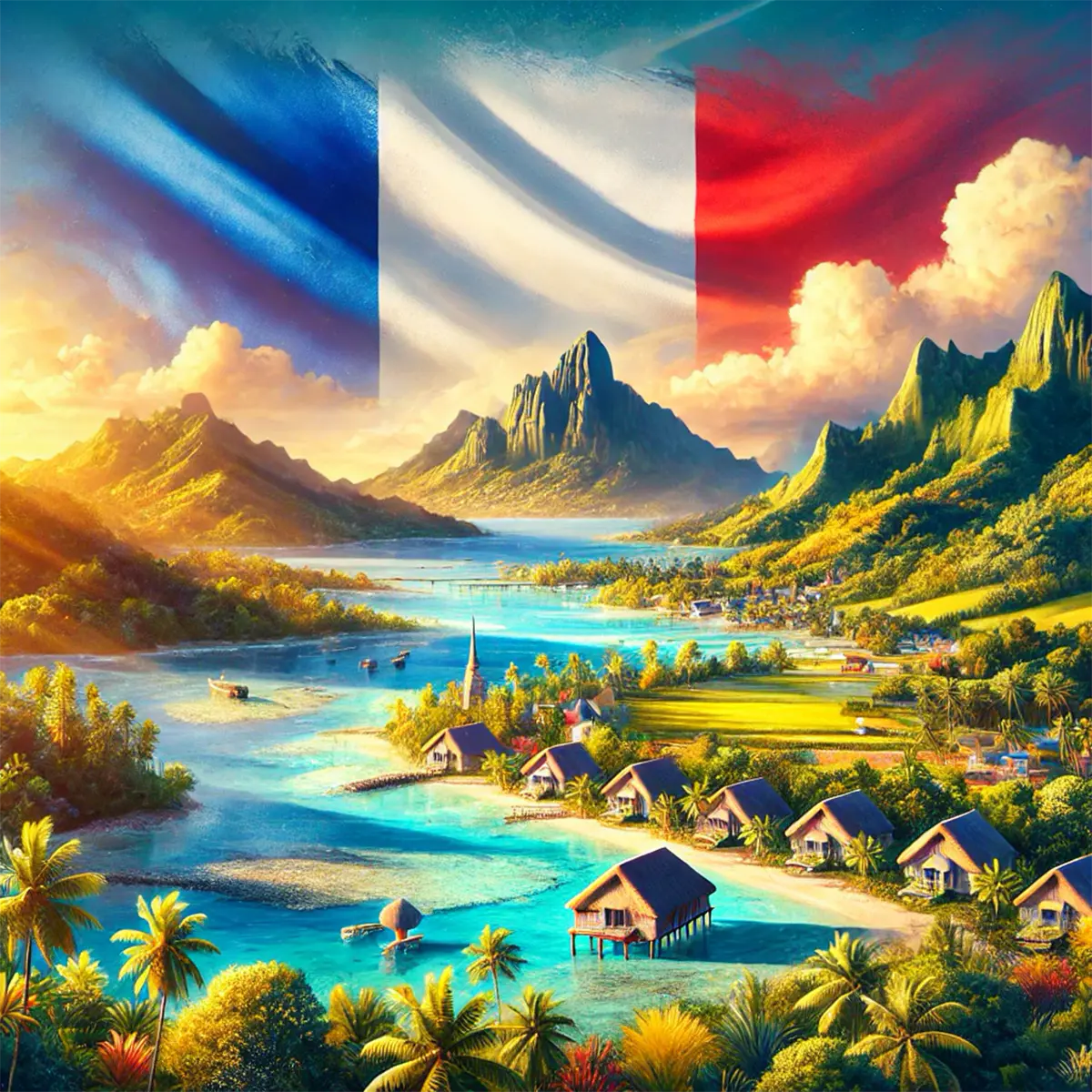Before colonization, Wallis and Futuna existed as separate Polynesian kingdoms, each with its own traditions and political structure. The islands were ruled by local chiefs and kings who governed through local customs and laws. Although there were no official flags in the modern sense, many Polynesian societies had religious and cultural symbols that played an important role in their lives. Each of the kingdoms (Uvea on Wallis and Alo and Sigaa on Futuna) used their own traditional symbols associated with the royal families, but these symbols were not represented in the form of flags.
Prior to the French protectorate, the Kingdom of Uwea (Wallis) had a red flag with a white cross that resembled the Maltese cross. This cross was introduced by the French Catholic missionaries, the Marist Brothers, as part of their evangelization activities. When the French protectorate was officially established in 1887 for Wallis and in 1888 for Futuna, the French tricolor was added to the canton of the existing flag. This change symbolized the new political status of the islands under French protectorate. The red flag with a white cross became the official representation of Uva and was later extended to the entire Wallis and Futuna, with variations of the flag representing their traditional kingdoms preserved on each island alongside the French flag. The addition of the French tricolor in the canton signified French sovereignty over the islands while preserving the cultural and religious identity established through the cross.
In 1961, Wallis and Futuna were officially recognized as a French overseas territory, further cementing the presence of French symbols on the local flag. This status allowed the islands to retain a certain degree of autonomy while being under French administrative control. Thus, the flag came to symbolize this dual identity: traditional and colonial. In the 1980s, the Wallis and Futuna Islands saw an important development in their cultural identity: the kingdoms of Alo(3) and Sigave(2), which are part of Futuna, created their own flags. This was done to emphasize their local sovereignty and identity, while the traditional flag of Wallis and Futuna remained for the kingdom of Uvea(1) (Wallis).

All three flags contain the French tricolor in the corner, symbolizing the connection to France, which is the sovereign of these territories. These flags continue to be used during traditional celebrations and holidays.
The current unofficial flag of Wallis and Futuna consists of a red cloth with four white triangles forming the cross of St. Andrew in the center. In the upper left corner is the French tricolor, surrounded by a white border, symbolizing the territory's status as a French overseas community. This flag has become a widespread symbol and is used both at official events and during cultural celebrations on the islands. The white cross, formed by four triangles, represents the three kingdoms of the Wallis and Futuna Islands (Uvea, Alo and Sigave), as well as the administrator acting on behalf of France. The exact year of this flag's creation is unknown, but it has been in more active use since the 1980s, when each of the three kingdoms received its own symbols.



